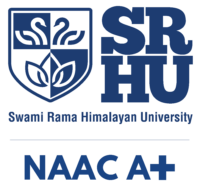Guidelines for Teaching Enhancement and Curriculum Development
November 7, 2025 2025-11-15 6:40Guidelines for Teaching Enhancement and Curriculum Development
Guidelines for Teaching Enhancement and Curriculum Development
| Approved | Board of Management on 12th January 2019 |
| Notification | Notified by Registrar vide notification No. SRHU/Reg/OO/2019-04 (i) dated 15th January 2019 |
| Reviewed / Revised | Board of Management on 29th March 2022 |
| Notification | Notified by Registrar vide notification No. SRHU/Reg/OO/2022-58 (i) dated 5th April 2022 |
| Next Review | 2025–26 |
- Short Title and Commencement
- Short Title: This document shall be known as the “Guidelines for Teaching Enhancement and Curriculum Development” of Swami Rama Himalayan University (SRHU).
- Commencement: The guidelines shall come into effect from the date of approval by the Board of Management (BOM) and shall be applicable henceforth.
- Definition
- Board of Studies (BoS): The statutory academic body responsible for academic governance, curriculum development, and quality assurance within each academic unit/department of SRHU.
- Teaching Enhancement: Activities and strategies aimed at improving the effectiveness of teaching practices including faculty development, innovative pedagogy, and assessment methods.
- Curriculum Development: The systematic design, review, and revision of academic curricula to ensure relevance, quality, and compliance with academic and professional standards.
- Curriculum Committee: A committee constituted under the BoS, responsible for curriculum-related decision-making including design, review, and quality assurance.
- Outcome-Based Education (OBE): An educational approach that focuses on achieving specific learning outcomes aligned with program goals and graduate attributes.
- NEP 2020: National Education Policy 2020 guiding contemporary education reforms in India.
- PreambleSwami Rama Himalayan University is committed to fostering academic excellence by continuously enhancing teaching quality and developing dynamic curricula. Recognizing the evolving needs of students, industries, and society, these guidelines ensure alignment with national education frameworks and the University’s vision.
- ApplicabilityThese guidelines apply to all academic units, departments and curriculum committees at Swami Rama Himalayan University. It encompasses all aspects related to teaching enhancement and curriculum design, review, and revision activities.
- Curriculum Committee Composition:
Designation Role Responsibilities Dean / Principal / HOD Chairperson - Provide academic leadership and direction to the committee.
- Preside over meetings and finalize agendas.
- Ensure alignment of committee decisions with university policies, NEP 2020, and national frameworks.
- Facilitate implementation of approved curriculum reforms.
Heads of Departments / Professor / Associate Professor (2, on rotation, nominated by the Dean/Principal) Members - Represent departmental perspectives and requirements.
- Present proposals for new/revised programs.
- Ensure departmental compliance with approved curriculum changes.
Senior Faculty (2) Members - Offer academic and disciplinary expertise in curriculum structuring.
- Contribute to curriculum mapping with Bloom’s taxonomy and Program Outcomes.
- Suggest pedagogy innovations and assessment reforms.
- Support integration of skill-based and interdisciplinary components.
One Student Representative (UG or PG) and One Alumni Member - Provide learner-centric feedback and insights from a student perspective.
- Suggest improvements in academic load, flexibility, and electives.
- Participate in discussions related to curriculum structure, not assessments or faculty evaluations.
- Communicate fellow students’ concerns and feedback.
Member Secretary (Nominated by Chairperson) Convener - Prepare and circulate agendas with approval from the Chairperson.
- Record and maintain minutes of meetings.
- Teaching Enhancement Strategies
- Faculty Development:
- Organize regular workshops, seminars, and training on innovative teaching methodologies, educational technology, and assessment strategies.
- Encourage participation in external professional development like conferences and certification courses.
- Establish Teaching Excellence Awards to recognize outstanding faculty performance annually.
- Innovative Teaching Methods:
- Encourage active learning techniques such as group discussions, case studies, and problem-solving exercises.
- Promote blended and online learning, integrating video lectures, discussion forums, and interactive assessments to enhance engagement.
- Use diverse assessment methods (formative and summative) with timely constructive feedback.
- Use of Technology:
- Provide access to educational tools like simulation software, virtual labs, and e-libraries.
- Conduct regular training to help faculty integrate technology effectively.
- Faculty Development:
- Curriculum Development Procedure
- Curriculum Design and Review:
- Establish Curriculum Committees in each academic department with multi-stakeholder representation.
- Conduct needs assessments to identify emerging trends and industry demands.
- Design curricula balancing theoretical knowledge and practical skills with an emphasis on interdisciplinary learning, research, and critical thinking.
- Ensure curricula align with Outcome-Based Education (OBE) principles.
- Mapping Course Outcomes (COs) with Program Outcomes (POs) and Program Specific Outcomes (PSOs).
- Defining measurable CO attainment levels through direct (exams, assignments, projects) and indirect (feedback, surveys) assessment methods.
- Using attainment data to implement continuous improvement in teaching–learning processes.
- Review curriculum at least every three years with feedback from faculty, students, alumni, and industry partners.
- Align curriculum with NEP 2020 and regulatory requirements.
- Industry and Community Engagement:
- Collaborate with industry through guest lectures, internships, joint research, and curriculum co-design.
- Incorporate community needs to foster social responsibility and engagement.
- Student-Centered Curriculum:
- Define clear and measurable learning outcomes aligned with academic goals.
- Offer flexible learning pathways including electives, minors, and interdisciplinary programs.
- Integrate experiential learning opportunities such as internships, fieldwork, and research projects.
- Curriculum Design and Review:
- DocumentationAll the activities related to teaching enhancement and curriculum review should be documented.

